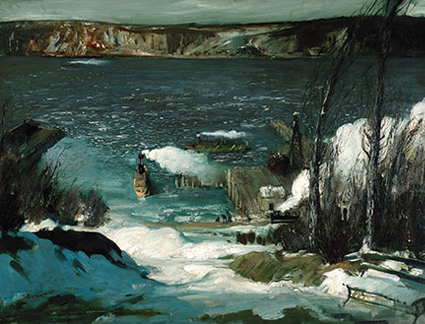George Bellows at the National Gallery. By Andrew Graham-Dixon.
The building of Pennsylvania Station was one of the heroic feats of early modern American engineering, rivalled only by the construction of Brooklyn Bridge. Designed by McKim, Mead and White, the station was to be modelled on the Baths of Caracalla in ancient Rome. A monument for modern Manhattan, connecting New York with Boston, Philadelphia and Washington DC, its creation required the razing of four entire blocks of the city and the cutting of many miles of tunnel under the East River and the Hudson. The digging of the central excavation site became a great public spectacle, with thousands of onlookers peering over the edge of the craterous void to watch the clattering work of steam-driven shovels and the ceaseless shuttling to and fro of spoil-removal trains.
The artist George Bellows joined the crowds one night in 1908, not long after construction had begun, and painted a vivid if notably murky impression of the scene. His Excavation at Night is a picture about the infernal energies that forge a modern city. The site of the dig resembles a bomb crater at night, a dark void painted in greys and blacks as seemingly viscous and grit-studded as the very mud and earth through which an implied army of workmen –represented only by the silhouettes of their machines, including a gigantic piledriver outlined against a flurry of smoke – must hack and tunnel their way. Floodlights cast a grey and ghostly light on the sheer walls of the pit, while above, in the distance, a couple of brown tenements and a cluster of streetlamps mark the point where the inhabited city stands poised above the maelstrom of its own metamorphosis. Sparks from a fire fleck the painted night.
The picture currently forms part...


